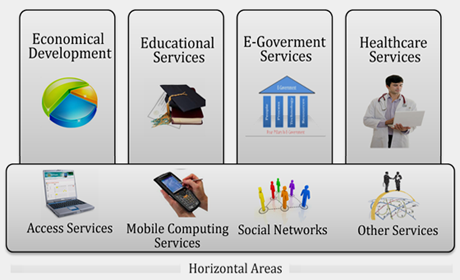|
Samples Overview
The Samples provides a quick reference and
overview of the planning environment in terms of the services provided,
initiatives supported and reports generated.
Sectors
and Services: The
Planning Environment supports a wide range of ICT services in economic
development. healthcare, education, e-government, and other sectors. These
“vertical sectors” are supported by several horizontal services such as
network access and mobile computing that support all vertical sectors and
services. Each sector provides many services. By using the samples, you
can browse through the ICT services provided by each sector by simply clicking on the various
sectors.

|
|
Initiatives: Many
initiatives span several services from one or more sectors. Here are some
examples:
-
Millennium
Development Goals (MDGs) that
span economic development, education, and other sectors
-
eCity and eVillage Initiatives that
provide a wide range of ICT services that span public safety and welfare in
addition to economic development and education sectors.
-
Government
specific initiatives at local as well as national levels in
different countries (e.g., the Digital Britain Initiative).
-
Initiatives
to strengthen private industry sectors such as manufacturing, telecom, and
others
The
Planner Processing and Outputs:
A user of the Planner selects a service (e.g., mobile
health clinic) for a given country (e.g.,
Nigeria
) and quickly generates
the following reports:
-
Business
plans that can be used for obtaining funding
-
Detailed
Planning Reports (DPRs) that show the architecture, the needed policies, and enabling
technologies for the chosen service
-
Standardized
RFPs (Requests for Proposals)
that can be used to attract the needed vendors through an open bidding
process
-
Project
management, disaster recovery and governance guidelines for monitoring and
controlling the development activities
-
Education,
training and public awareness campaigns needed for success To produce
these reports, the Planner guides the users through cost benefit analysis,
architectural configurations, implementation and acquisition options, and
project management considerations.
|